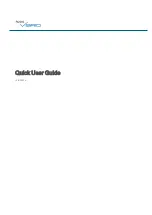
Figure 2: CO Detector Placement
Legend
A: Bedroom
B: Living Room
C: Kitchen
D: Basement
E: Garage
For added protection, install additional CO detect-
ors in every separate bedroom and on every level of
your home. If your bedroom hallway is longer than
14 meters (40 feet), install a CO detector at BOTH
ends of the hallway. Install an additional detector 6
meters (20 feet) away from the furnace or fuel
burning heat source.
For maximum protection, the detector should also
be located outside primary sleeping areas or at each
level of your home. Mount the detector on a firm
wall or ceiling.
DO NOT install CO detectors:
l
In locations where temperature may be below
0ºC (14ºF) or above 40ºC (104ºF).
l
In locations where humidity is below 10% or
above 93% RH non-condensing.
l
Near paint thinner fumes.
l
Near air conditioners, furnaces, stoves, fire-
places and any other ventilation source that may
interfere with CO gas entering the detector.
l
In locations where furniture or draperies may
obstruct the air flow.
l
In exhaust streams from gas engines, vents,
flues or chimneys.
l
Where dirt or dust could collect and block the
sensor and prevent it from working.
l
In locations that can be reached by children.
l
In turbulent air from ceiling fans.
l
In close proximity to an automobile exhaust pipe
- this will damage the detector.
Mounting
The detector can be mounted on a wall or ceiling.
For EN approved sites, only ceiling installation is
allowed.
The WS4933 must be mounted with its bracket
(when it is attached to its bracket the tamper switch
is pressed and the detector automatic reset is per-
formed).
1.
Refer to the diagram below and install using
screw locations as required. Maneuver the
base so the screws are at the elbow of the
screw slots and secure.
2.
Fit the detector inside the mounting bracket by
aligning it as shown in Figure 3 (detector’s
alignment notch should be slightly offset from
the mounting bracket tamper release tab), then
turn the detector in a clockwise direction until
it clicks into place.
3.
Test the detector after completing the install-
ation (as described in the TESTING THE
DETECTOR section of this manual) and
refer to the alarm control panel installation
manual for additional information concerning
the use of wireless devices.
Figure 3: Mounting the Detector
Tamper Protection
The WS4933 includes a tamper resistant feature
that prevents removal from the mounting base
without the use of a tool. To engage the tamper res-
istant feature, cut the small plastic tab located on
the mounting bracket and then install the detector.
To remove the detector from the base once it has
been made tamper resistant, use an appropriate
screwdriver to depress the square tamper release
tab located on the skirt of the mounting bracket and
turn the detector counterclockwise.
Owner's Instructions
Testing the Detector
Note: Before testing, notify the central station.
Test the detector by pressing the Test/Hush button.
The red LED flashes and the sounder emits a tem-
poral 4 pattern. The keypad indicates that the
detector is in alarm.
Maintenance
Press the detector's TEST/Hush button once every
week to ensure proper operation of the detector.
When low battery alarm exists (see specifications)
immediately replace the battery.
Once a month, use a vacuum cleaner to keep the air
vents free of dust.
2

























